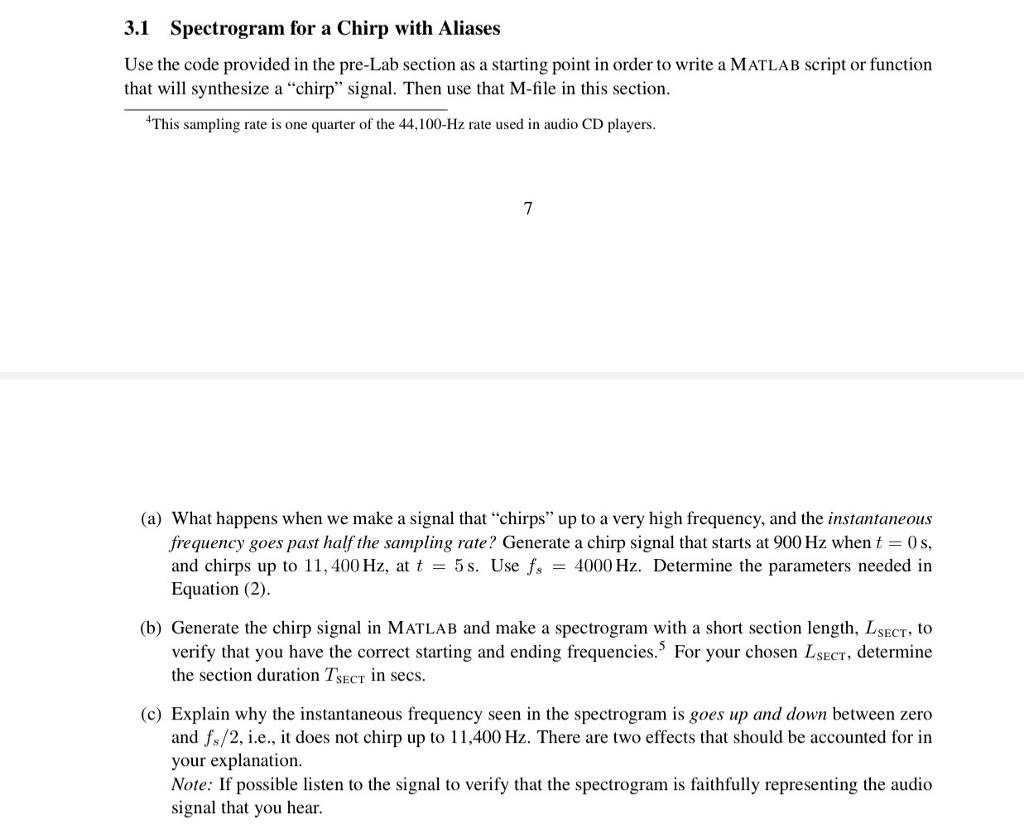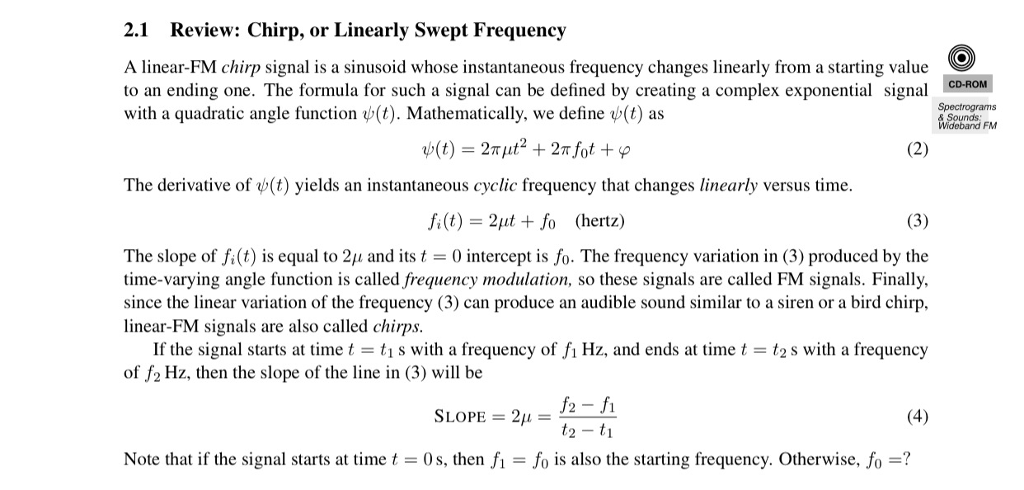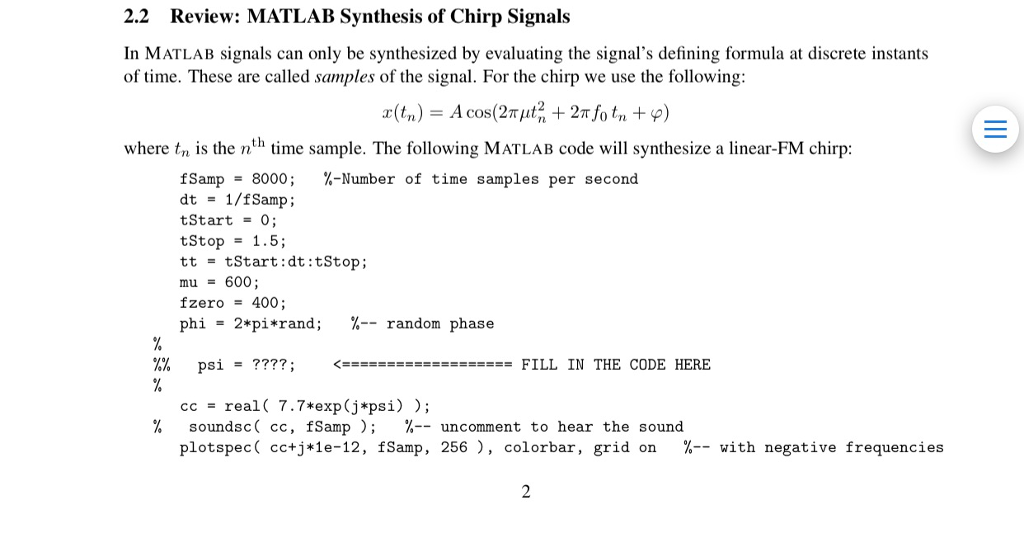MATLAB. PLEASE ANSWER ALL PARTS FOR 3.1. FOR PART A DETERMINE THE PARAMETERS NEEDED. FOR PART B SHOW CODE FOR GENERATED CHIRP AND SPECTROGRAM AND WHAT DOES LSECT AND TSECT EQUAL. FOR PART C WRITE EXPLANATIONS FOR UPS AND DOWNS IN THE SPECTROGRAM



3.1 Spectrogram for a Chirp with Aliases Use the code provided in the pre-Lab section as a starting point in order to write a MATLAB script or function that will synthesize a chirp signal. Then use that M-file in this section. This sampling rate is one quarter of the 44,100-Hz rate used in audio CD players. (a) What happens when we make a signal that chirps up to a very high frequency, and the instantaneous frequency goes past half the sampling rate? Generate a chirp signal that starts at 900 Hz when t = 0s, and chirps up to 11, 400 Hz, at t = 5s. Use fs = 4000 Hz. Determine the parameters needed in Equation (2). (b) Generate the chirp signal in MATLAB and make a spectrogram with a short section length, LSECT, to verify that you have the correct starting and ending frequencies. For your chosen LsECT, determine the section duration Tsect in secs. (C) Explain why the instantaneous frequency seen in the spectrogram is goes up and down between zero and fs/2, i.e., it does not chirp up to 11,400 Hz. There are two effects that should be accounted for in your explanation. Note: If possible listen to the signal to verify that the spectrogram is faithfully representing the audio signal that you hear. 3.1 Spectrogram for a Chirp with Aliases Use the code provided in the pre-Lab section as a starting point in order to write a MATLAB script or function that will synthesize a chirp signal. Then use that M-file in this section. This sampling rate is one quarter of the 44,100-Hz rate used in audio CD players. (a) What happens when we make a signal that chirps up to a very high frequency, and the instantaneous frequency goes past half the sampling rate? Generate a chirp signal that starts at 900 Hz when t = 0s, and chirps up to 11, 400 Hz, at t = 5s. Use fs = 4000 Hz. Determine the parameters needed in Equation (2). (b) Generate the chirp signal in MATLAB and make a spectrogram with a short section length, LSECT, to verify that you have the correct starting and ending frequencies. For your chosen LsECT, determine the section duration Tsect in secs. (C) Explain why the instantaneous frequency seen in the spectrogram is goes up and down between zero and fs/2, i.e., it does not chirp up to 11,400 Hz. There are two effects that should be accounted for in your explanation. Note: If possible listen to the signal to verify that the spectrogram is faithfully representing the audio signal that you hear









